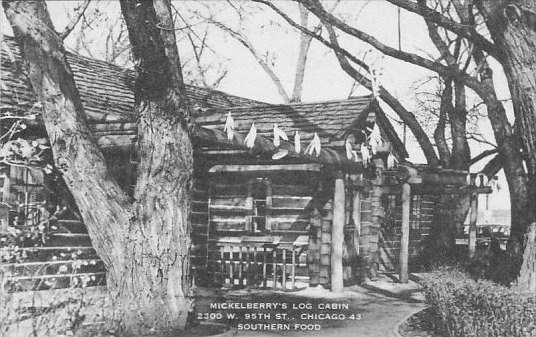The state of Illinois authorized a three-man police force for Chicago early in 1835 when it was only a town, population 3,200. When it was incorporated as a city on March 4, 1837, the same three men served.
An ordinance issued on May 17, 1851, assigned the city marshal the role of the acting police chief, while the mayor was the head of the police force. The mayor could appoint officers and issue orders. In 1855 the department was overhauled and expanded the number of police to nearly 20.
Elected as a reformer against the "Red-Light" vice district in 1857, Chicago mayor John "Long John" Wentworth, an educated man from the New England area and a former newspaper editor, stood an imposing six-foot-six and weighed 300 pounds. He seized the opportunity to use his powers as the head of police.
 |
| Chicago Mayor John "Long John" Wentworth. |
On April 20, 1857, William Ogden, who had been Mayor before Wentworth, and who was now an important businessman in the city, managed to purchase several properties in the Sands. He immediately ordered the squatters living in these properties out, but when they refused to budge, he begged Mayor Wentworth for help, who was only too happy to see an opportunity to eliminate the hated "Red Light" vice district. Wentworth organized and advertised a major horse race at a Chicago race track. Most of the male residents of the Sands were habitual gamblers, so the event attracted the substantial majority of their population. While the men were gone, Wentworth and Ogden crossed over to the Sands, accompanied by a team of horses. After serving prior eviction notices, the horse team was hitched to the foundations of several of the shanties, and each was pulled down. The destruction led to a small riot, with the remaining residents of the Sands running into the streets, looting their neighbors' properties, and destroying most of the rest of the district in the process. A few hours later, what was left went up in flames.
The next day's Chicago Tribune reported a fanciful hope:
This congregation of the vilest haunts of the most depraved and degraded creatures in our city has been literally "wiped out," and the miserable beings who swarmed there driven away. Hereafter, we hope the Sands will be the abode of the honest and industrious, and that efficient measures will be taken to prevent any other portion of the city from becoming the abode of another such gathering of vile and vicious persons.Claiming budget concerns during his second term in 1861, Wentworth reduced the police force and imposed a midnight curfew. Outraged voters prompted the state of Illinois to become active in Chicago's police politics again. On February 15, 1861, the state legislature established a Board of Police Commissioners in the city. It would be composed of three commissioners, one for each of the three districts—north, south, and west—divided by the Chicago River. The initial commissioners would be appointed by the governor and the successors would be elected.
Wentworth did not cozy to these terms. At 2 AM on March 22nd, he called all 60 or so of the city's police officers to City Hall (then on a block bound by LaSalle, Washington, Clark, and Randolph) and pulled off something of a coup.
 |
| Chicago City Hall #4 – City Hall-County Building. In 1853, a new city hall building was constructed on the block bounded by LaSalle, Washington, Clark, and Randolph Streets. |
 |
| Chicago City Hall #4 – City Hall-County Building. As the city grew rapidly through the 1850s, the City Hall-County Building was expanded with several additions, including a third floor, a dome, and east and west wings. The Great Chicago Fire of 1871 destroyed this building. |
The mass firing was largely a show. Few people would have known that there was no active police force. The officers were reappointed later that day. Wentworth claimed that the move would allow the Board of Commissioners to have a clean slate to begin appointing police. Instead of a city marshall, there would be a general superintendent of police.
In the hours of lawlessness, the only reported crimes were two burglaries.
Compiled by Dr. Neil Gale, Ph.D.












